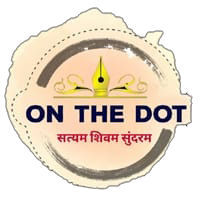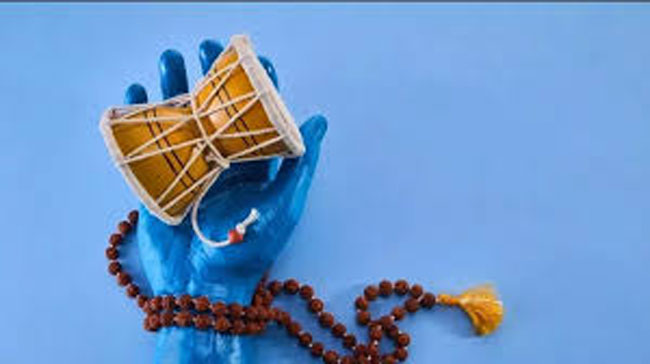In the rich tapestry of Indian symbolism, few objects carry as much cosmic and spiritual weight as the Damru— the small, hourglass-shaped drum held in the hands of Lord Shiva. More than just a percussion instrument, the Damru is a symbol of creation, rhythm, dissolution, and divine energy. In Shiva’s hands, it becomes the sound of the universe—the first vibration, the primordial Nada (sound) from which all life emerges.
the small, hourglass-shaped drum held in the hands of Lord Shiva. More than just a percussion instrument, the Damru is a symbol of creation, rhythm, dissolution, and divine energy. In Shiva’s hands, it becomes the sound of the universe—the first vibration, the primordial Nada (sound) from which all life emerges.
Structure of the Damru: Symbolism in Form
The Damru is shaped like an hourglass, with two resonating ends joined by a narrow waist. Its construction itself conveys a profound philosophy:
Duality in harmony — creation and destruction, male and female, sound and silence.
When shaken, the Damru produces a rhythmic beat through two attached beads that strike its membranes alternately. This beat is no ordinary rhythm—it is said to echo the pulse of the cosmos.
Damru and Lord Shiva: Mythical and Spiritual Connections
🔱 Shiva’s Tandava and the Sound of Creation
As Nataraja, the cosmic dancer, Lord Shiva performs the Tandava, the dance of destruction and renewal. During this divine performance, the Damru in his hand emits the Nada—the sound that initiates the cycle of creation.
As one ancient verse says:
“Nāda Brahma Haraḥ Śivaḥ, yasya ḍamaru-ninādah sṛṣṭikramāya sañjātaḥ”
(Nada is Brahman, and Shiva is its embodiment; from the sound of his Damru, creation was born.)
📜 Maheshwara Sutras: Sanskrit Grammar from the Damru
According to tradition, when Lord Shiva played the Damru, 14 sacred sounds emerged, known as the Maheshwara Sutras. These were later codified by sage Panini to form the foundation of Sanskrit grammar.
Example:
“a i u ṇ | ṛ ḷ k | e o ṅ | ai au c | ha ya va ra ṭ …”
This shows that the Damru is not just a source of sound, but of language, order, and sacred knowledge.
Folk Beliefs and Devotion
🪶 A Tale from Kashi (Varanasi)
One folk tale from Kashi tells us that once the universe was engulfed in darkness and silence. To break the stillness, Lord Shiva played his Damru, and the sound of creation returned. Since then, Kashi is also known as the City of Divine Sound (Nada Nagari).
Damru in Yoga and Spiritual Practice
In yogic philosophy, the sound of the Damru symbolizes the union of Nada (sound) and Bindu (point of origin)—the coming together of sound and silence. This vibration is said to awaken consciousness in the practitioner.
As stated in the Hatha Yoga Pradipika:
“Nāda-anusandhāna-sambhūto yogī paraṁ padaṁ labhate”
(The yogi who meditates on Nada attains the supreme state.)
What the Damru in Shiva’s Hand Signifies
- Right Hand (Fire) — Symbol of destruction.
- Left Hand (Damru) — Symbol of creation.
Between the two lies the divine dance of Shiva — the eternal cycle of dissolution and rebirth.
Damru: The Instrument of Universal Truth
The Damru teaches us that all existence arises from sound. The first vibration of the universe was not light, but Nada—cosmic sound. In this way, Shiva’s Damru is the instrument that echoes:
- The origin of life,
- The source of knowledge,
- And the expression of divine consciousness.
“Shivam Naadam, Naadam Brahma”
(Shiva is Nada, Nada is Brahman.)
Conclusion: Shiva and the Damru — The Eternal Sound
The Damru is not merely an ancient drum. It is the symbol of divine rhythm, the heartbeat of the universe, the primal echo that reminds us of our origin in vibration. When Shiva plays the Damru, he is not just dancing—he is weaving the cosmos into being.
In the silence between two beats lies the mystery of life, and in the resonance of the Damru lies the song of the infinite.




